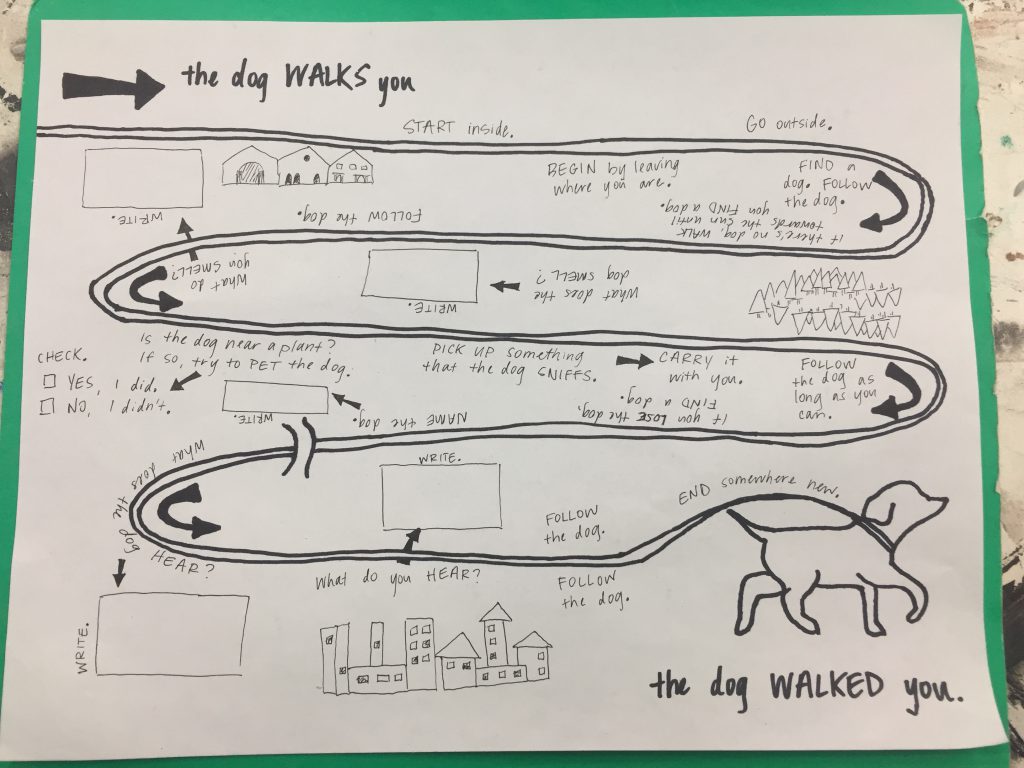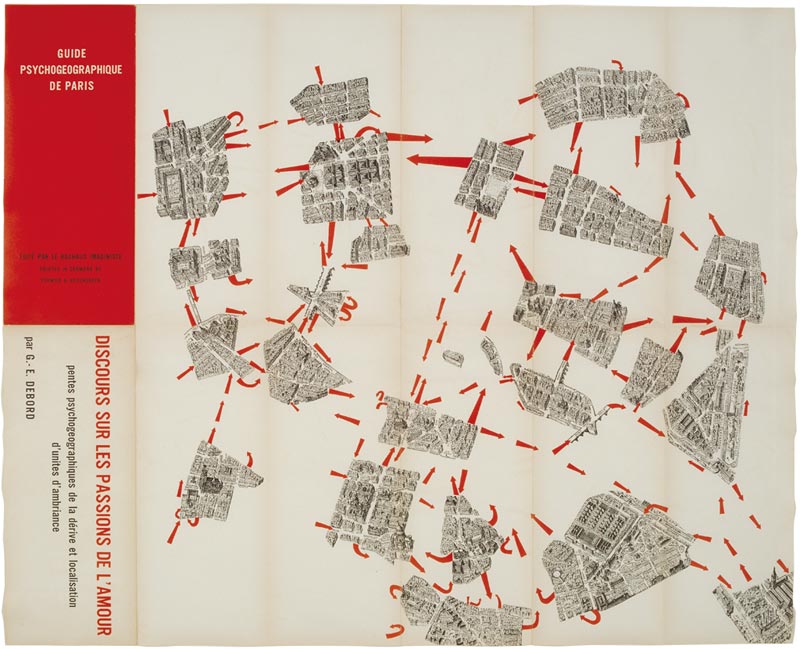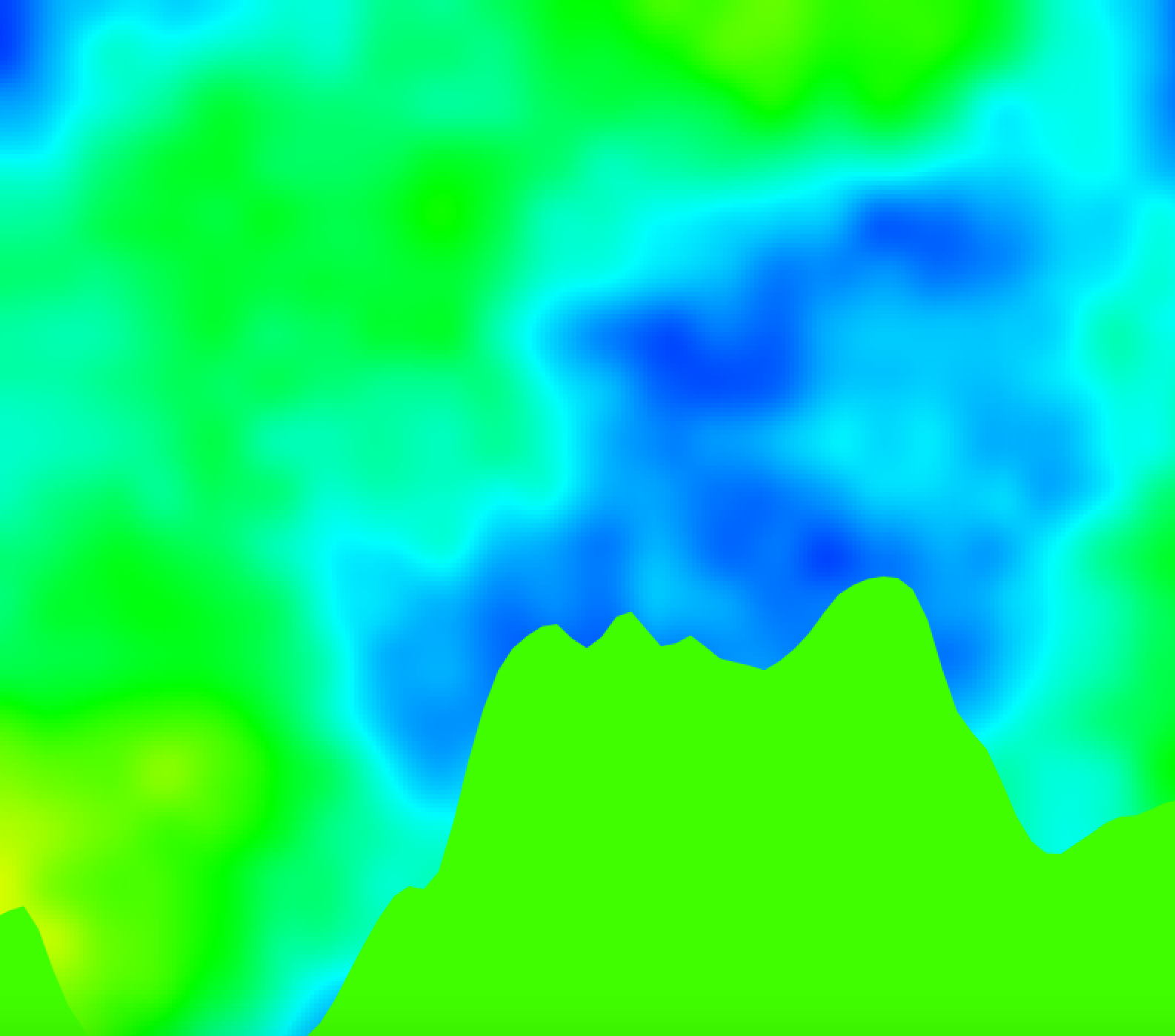
My inspiration for this system comes from the idea of interrupting and intervening in the ways we typically engage with the space around us. From class, I am very interested in Samuel Beckett’s work, Quad, which creates an exciting pattern with only a few directions, as well as George Brecht’s text, Chance Imagery. Brecht explains that one purpose of chance-imagery is: “to place the painter’s, musician’s, poet’s, dancer’s chance images in the same conceptual category as natural chance-images (the configuration of meadow grasses, the arrangement of stones on a brook bottom), and to get away from the idea that an artist makes something ‘special’ and beyond the world of ordinary things.”
So I began to look deeper into how conceptual artists have dealt with space, turning to psychogeography and the Situationists’ map making. I studied Guy Debord’s Theory of the Dérive (1958), where he describes the goal of the dérive as studying a terrain or emotionally disorienting oneself. The dérive is a way of moving through an urban environment in an experimental and unplanned journey. This approach to psychogeography became the main guide for my work.


the dog WALKS you is a set of instructions to lead someone on a walk wherever they may be by paying attention to things they normally wouldn’t think of. The guiding instruction is to follow a dog. This way, the decision is not being made by the artist or the participant. Even the name is meant to emphasize that the participant is not in control, the dog is. There’s a sense of randomness and it’s an idea that people in many different areas should be able to try. It’s meant to be playful and a bit unsettling – playful from the natural joy of dogs and unsettling from trying to follow something.
Most of my trial and error came from how to present the text that makes up the dog WALKS you. I believe that it can be presented in many different ways, but my goal was to present it in a way that would encourage the largest amount of people to participate. I first tried it as an Instagram post as a casual way to disperse information, but I wasn’t sure people would engage with the post besides liking it. So my final version is a map, like a Situationist map, that can be printed and handed out or sent out online. The map prevents people from being on their phones while observing their environment and allows the participant to leave some trace of their experience.

